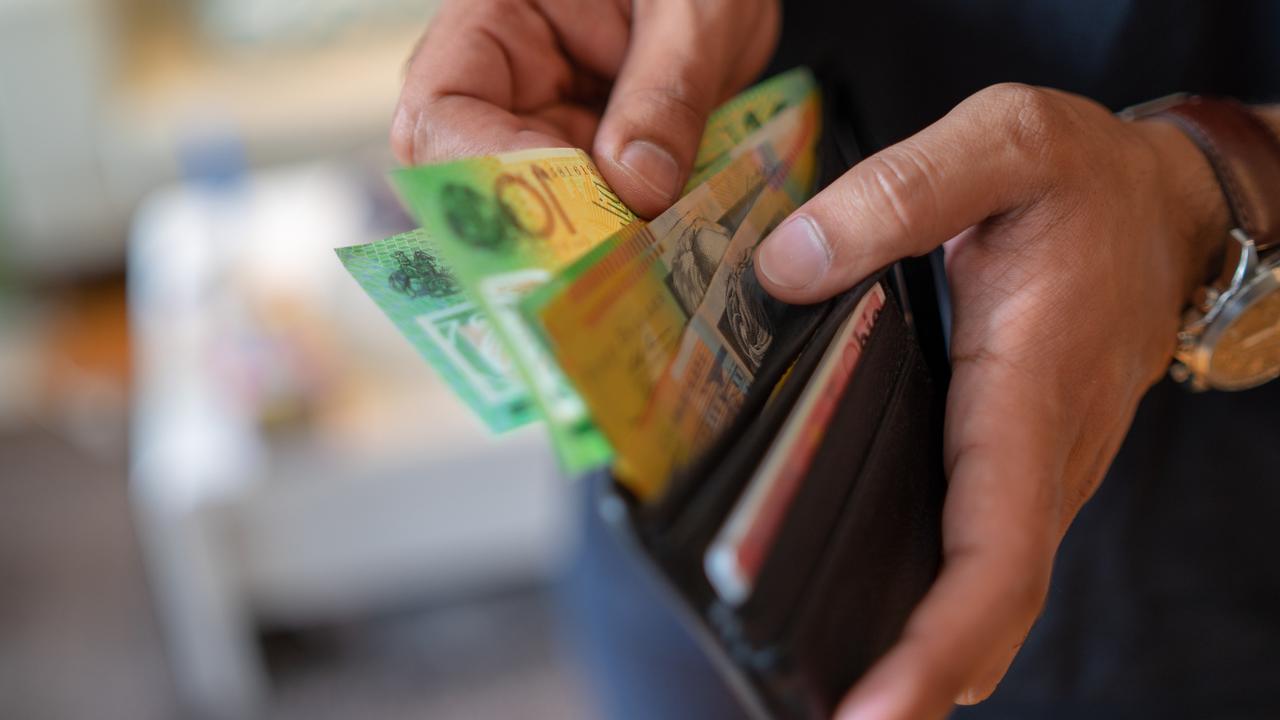Australian city that’s copped the biggest price hikes
Aussie drivers have been slugged by record high petrol prices but one city is copping it harder than others from all directions.
A way bigger than expected surge in prices has fuelled already strong expectations of a Reserve Bank of Australia interest rate hike this year, but the banks are moving regardless.
The Australian Bureau of Statistics released inflation data on Tuesday showing a 1.3 per cent rise in the consumer price index in the December quarter and 3.5 per cent annually, smashing forecasts.
The more meaningful figure of “trimmed mean” or underlying inflation – which excludes large price rises and falls – rose by 1 per cent over the quarter and 2.6 per cent over the year.
That annual figure has pushed above the mid-point of the RBA’s target band of 2-3 per cent for the first time since mid-2014.
“The RBA will now almost certainly need to adjust its forward guidance to acknowledge a rate hike is possible this year,” ANZ Research said.
“We suspect the RBA won’t shift to a 2022 rate hike as being its central case, likely wanting to see wages growth clearly accelerate. But earlier than expected evidence of this is also possible.”
CommSec chief economist Craig James noted that 2.6 per cent figure exceeded RBA forecasts of “around 2.25 per cent for much of the forecast period, increasing to around 2.5 per cent by the end of 2023”.
“Inflation has exceeded Reserve Bank expectations for the past two quarters,” Mr James said.
“And that means there will be greater discussion about when the Reserve Bank may start lifting interest rates.
“So far, the Reserve Bank has largely ruled out rate hikes until 2024 – or 2023 at the earliest.”
But the RBA won’t just look at inflation rates, Mr James said.
“It will want to see the economy at or near ‘full employment’ (a jobless rate near 4 per cent or below),” he said.
“The jobless rate currently stands at a 13-year low of 4.2 per cent.
“And the RBA will want to see wage growth near 3 per cent. The current annual growth rate of wages is 2.2 per cent.
“But with the job market tightening, there are more anecdotal reports that wages are starting to lift.”
The ABS data showed which capital city had been slugged with the highest price rises, with Hobart paying an extra 2.2 per cent compared to the previous quarter.
Brisbane copped the second highest increase (1.6 per cent), followed by Adelaide (1.5 per cent), Perth (1.4 per cent), Sydney (1.2 per cent), Melbourne (1.1 per cent), Canberra (1 per cent) and Darwin (0.8 per cent).
“Fuel prices were the largest contributor to higher goods inflation,” ABS head of prices statistics Michelle Marquardt said.
“More broadly, global supply chain disruptions and material shortages, combined with rising freight costs and high demand, contributed to price increases across a wide range of goods including dwelling construction materials, motor vehicles, furniture and audio-visual equipment.”
Newly built houses, townhouses and apartments prices jumped by 4.2 per cent over the quarter, fuelled by not just materials, but also labour shortages, combined with continued strong demand.
The data comes after Westpac last week dramatically brought forward its expectation the RBA will increase the cash rate at its meeting on August 2 this year.
“We now expect one hike of 15 basis points in August to be followed by a further hike of 25 basis points in October,” Westpac chief economist Bill Evans said.
The bank then increased its fixed interest rates for owner occupiers and investors – the first fixed rate hike by the major banks this year.
Canstar’s finance expert, Steve Mickenbecker, said Westpac followed up its prediction by “putting its money where its mouth is”.
“Westpac has the lowest variable rate of the major banks and continues to increase fixed rates,” Mr Mickenbecker said.
“This is exactly the interest rate settings you would expect of a bank looking at a near-term future of a higher Reserve Bank cash rate.”
CreditorWatch’s chief economist, Harley Dale, said the latest inflation figures would “likely accelerate the upward movement in household and business market interest rates, irrespective of when the RBA moves”.
Mr Dale said he wasn’t convinced wages growth would meet the RBA’s criteria any time soon, saying it was “lacking considerably”.
Real Estate Institute of Australia president Hayden Groves attempted to quell homebuyer fears, pointing out the underlying inflation figure remained within the RBA’s target band.
“This suggests that there will be no immediate pressures on interest rates, which according to the RBA won’t be until 2024,” Mr Groves said.
“Buyers of new dwellings can expect further pressures on costs as the sector works through its current backlog and supply-side disruptions. However, these factors are more likely to be transitory rather than embedded in the economy.
“This suggests some buyers and owners will continue to see relatively benign monetary policy settings for some time yet.”
Canstar’s editor-at-large, Effie Zahos, said the question was how soon and by how much the RBA would lift the cash rate this year.
“It’s a fine line between reining in inflation and putting a stop on spending,” she said.
“The Reserve Bank is mindful that there is a large volume of debt with homeowners and businesses, and one thing the bank would not want is to dent consumer confidence and set back economic recovery.
“Budding homebuyers may just find that the threat of a cash rate hike is just what this heated property market needs to give them a way in.”
Canstar estimates that for a $500,000 mortgage at the average variable interest rate of 2.98 per cent, a 0.25 per cent increase every three months from October this year would mean paying an $446 extra per month by March 2024.
Originally published as Aussies forking out 6.6 per cent more at the petrol bowser, housing materials prices surge
For all the latest business News Click Here

